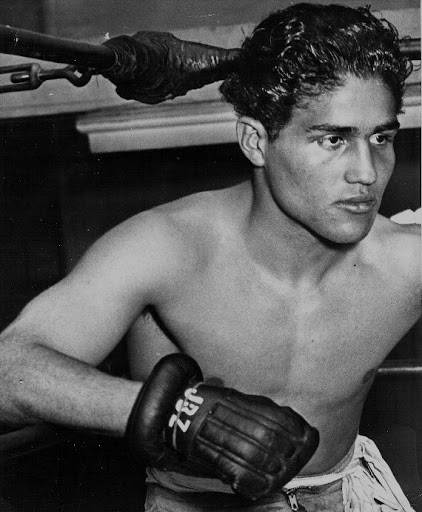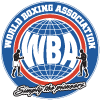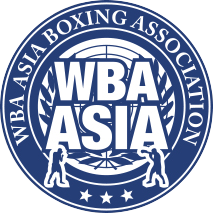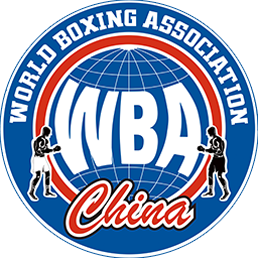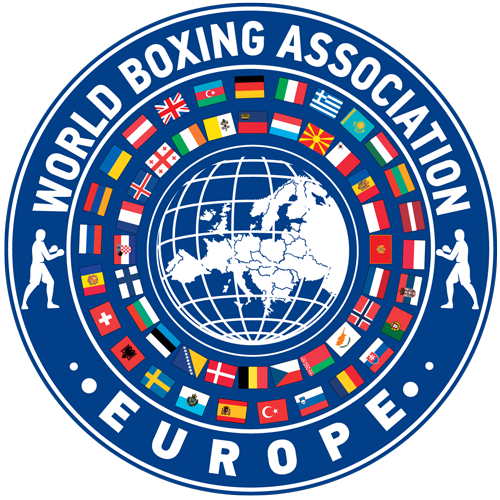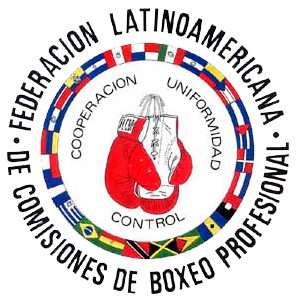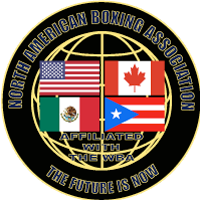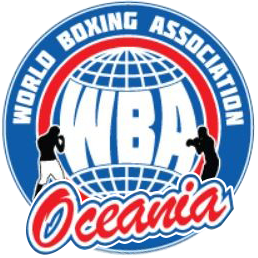A few weeks ago, when we published our chronicle about the great figures in the history of Mexican boxing, a group great figures indisputably led by Julio César ” The Emperor” Chávez, to which we added names such as Rubén “El Púas” Olivares, Ricardo “Finito” López, Raúl “Ratón” Macías, José “Pipino” Cuevas, among dozens of others, we also also mention, Rodolfo Casanova from Guanajuato, nicknamed indistinctly “El Chango”, “Baby” and “El Neverito de La Lagunilla”, the title we chose for this article.
Undoubtedly, Casanova occupies a very special place in Mexican boxing history because he was the main attraction in the early 1930’s and mid 40’s, as Macías, Olivares and Chávez were later, and today, the highly debated Saúl “Canelo” Álvarez.
That position of idol, considered by fans and experts of the time, was earned by “El Chango” for his aggressiveness and courage in the ring, for the power of his punches and, in addition, for his unique gifts of humility and friendliness. Connoisseurs acknowledge that in the annals of Mexican boxing, there had never been a fighter who aroused so much idolatry in the land of Benito Juárez before him.
But “El Neverito de La Lagunilla”, a nickname he earned for having worked as a modest employee of an ice cream parlor in the neighborhood of that name, northwest of the capital, where he lived since he was a child, squandered his exceptional boxing talent with his crazy and bohemian life outside the ring, in nights of endless partying with women and friends, profusely watered with bottles and bottles of alcohol, sleeping today in one bed, tomorrow in another, in that well-known and uncertain path followed, before and after him, by hundreds of many other boxers, both in Mexico and around the world..
CHAMPION WITHOUT A CROWN
It is worth mentioning that Casanova’s personal and sporting life served as a model for the movie “Campeón sin corona”, filmed and screened in 1945, considered a jewel of the “Golden Age” of Mexican cinema, directed by Alberto Galindo with David Silva in the role of Kid Terranova, the real-life Casanova’s alter ego.
Kid Terranova-Rodolfo Casanova offscreen-is the boxer who ends up a failure and forgotten contrary to his virtues in the ring.
The nickname Chango, a term used in Mexico to refer to an ape, came to him and his brother Carlos from his childhood days in La Lagunilla (northeast of the historic center of the Mexican capital) because of his long, dangling arms.
“El Chango” entered the boxing world at the age of 17 after a short time in amateur boxing, on 9/5/32. He debuted with a win in 4 over Paco Villa, at the Arena Nacional, and then added 11 in a row, 7 before the limit, and a disqualification.
In November of that year, the Filipino Speedy Dado (Diosdado Posadas), with a record of 72-12-13, stopped the youngster’s march. Casanova avenged Dado in the rematch with a knockout in December and then added another 6 wins in a row.
Young Tommy beat him on points at the Olympic Auditorium in Los Angeles, in July of the following year, but in August the Mexican knocked him out in 5, in Mexico City. Between that year and April of the following year he beat Harry Fierro, Johnny Zavala, Baby Palmore, Juan Rivero, Dado again, Chris Pineda, Willie Davies and Little Dempsey. Of these, only Dado finished on his feet.
On May 29, ’34 he faced the American veteran Freddie Miller, NBA featherweight world champion (later WBA) in a 10-round fight and failed on points at the Olympic Auditorium in Los Angeles. For Miller it was a pyrrhic triumph because on his way to the dressing room he fainted and had to be treated urgently, crushed by the punishment received from Casanova, who on January 1/36 took revenge by unanimous decision at the Plaza El Toreo de Cuatro Caminos in the capital.
By then the wasted life, alcohol, love affairs, staggering home when the sun was rising, was an everyday thing and the body was beginning to pass the bill.
MEXICO MOURNED HIS FAILURE
The month after the first clash with Miller, “Chango” received the opportunity for the fight of his life. He traveled to Canada for his first chance at the NBA (now WBA) bantamweight belt held by Puerto Rican Sixto “El Gallito” Escobar, the first Puerto Rican universal sovereign. The fight was staged at the Montreal Forum on June 26, 1934 and marked the beginning of the historic boxing rivalry between the two countries, which have produced some 300 world champions since those days until now, with unforgettable battles such as those of Salvador Sanchez vs Wilfredo Gomez; the latter vs. Carlos Zarate; “Pipino” Cuevas-Angel “Cholo” Espada; Edwin “Chapo” Rosario-Jose Luis Ramirez; Miguel Cotto vs. Antonio Margarito, among many others…
In the aforementioned Montreal fight, Casanova went up as a press favorite and 8-5 in the betting, especially because of the media comments that praised the “manito’s” physical condition, the power of his punches, his constant offensive style of fighting, as opposed to the technicality of the champion, his only virtue superior to those of the challenger.
Few people knew, of course, that “Chango” had escaped from the hotel the night before and was found in the early morning, drunk and lost, in a random street. Escobar, who was not distinguished by his punch (he had only 7 wins by knockout in 31 performances), overwhelmed the challenger in almost every round, knocked him down in the 3rd with a right hand and dispatched him on a full count in the 9th of the 15 rounds with a left hook and an uppercut to the chin.
After the setback, in mourning for the Mexican people who were sure of his victory and who wept for his defeat – inscribed in history as one of the greatest disappointments in boxing and in sports in general in his country – Casanova went back on the road, although with his followers already disenchanted and his idolatry ostensibly battered.
He added many other victories (53) of relative shine and accumulated 18 setbacks. Among the successes was the conquest of the national bantamweight belts against Alberto Baby Arizmendi (officially the first Mexican world champion) in June 1935 and the featherweight belt against Juan Zurita (who would later become world lightweight champion), a loser. 4 out of 5 against Casanova. To these two belts he added the lightweight belt against Joe Conde, his worst enemy, who knocked him out in one round in the rematch, in November 1937.
On August 4, 1948, Rodolfo Chango Casanova, the Mexican idol without equal until then, left boxing forever. He did it with one more victory, as he started his career, against Folly Villegas in the Coliseo Arena of the capital. Between 1932 and 1948 he accumulated a record of 81 wins (51 by KO), 22 defeats (9 by knockout) and 3 draws in 106 bouts.
In that long 16-year journey on the ring, “El Chango” faced, defeated and lost to the best of boxing in Mexico, U.S.A. and other countries. No taller than 5′ 3½″, he fought in the bantamweight, featherweight, lightweight and welterweight divisions, and was national champion in the first three.
Among his hundreds of opponents were the aforementioned Juan Zurita, whom he dominated in 4 of 5 fights, between 1934-38, 3 by KO and one KO against; the mythical Kid Azteca (Luis Villanueva Paramo), who fought between 1932-1961, in 4 different decades-as did Archie Moore, Anthony Hopkins, Roberto “Manos ‘E Piedra” Duran and George Foreman-and Rodolfo Casanova also fought the immortal Henry Armstrong, against whom he clashed 2 times for a win by disqualification and a KO3 against and Panchito Villa (Francisco Contreras, without any link to Francisco Guilledo, better known as Pancho Villa, an Asian boxing legend), whom he faced 4 times for 2-2, two KO’s in his favor and 2 decisions against him, His fight against “Kid Azteca” on March 1925 was called by the press “The Fight of the Century of Mexico”, won by “Chango” on points in 12 rounds.
EPILOGUE
To conclude, let us say that “El Chango”, the “Baby”, “El Neverito de La Lagunilla”, was born in Leon, Guanajuato, on May 21, 1915. He died at the age of 65 on November 23, 1980. Shortly before his death, he was seen begging in the vicinity of the famous Garibaldi Square and it was reported that he was in and out of hospitals several times, with his mind lost.
His unhappy life ended in a shelter for the indigent elderly in Mexico City. Before going to bed he chatted for a while with a group of his fellow sufferers, enjoyed a frugal dinner of a couple of tortillas and went to bed to sleep. He never woke up.


